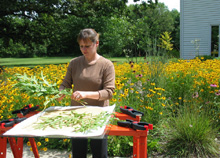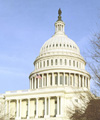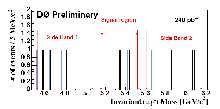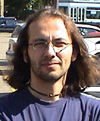 | Thursday, September 2, 2004 |
|
Thursday, September 2 11:00 a.m. Special Seminar - Curia II Speaker: Y. Enari, Nagoya University Title: Search for New Physics in Lepton Flavor Violating Tau Decays at Belle 2:30 p.m. Theoretical Physics Seminar - Curia II Speaker: A. Lenz, University of Regensburg Title: On the SU(3) Symmetry-Breaking Corrections to Meson Distribution Amplitudes 3:30 p.m. DIRECTOR'S COFFEE BREAK - 2nd Flr X-Over THERE WILL BE NO ACCELERATOR PHYSICS AND TECHNOLOGY SEMINAR TODAY
Friday, September 3 |
|
Thursday, September 2 Tomato Florentine soup Grilled Chicken Cordon Bleu Sandwich $4.75 Chimichangas $3.75 Chicken Marsala $3.75 Maryland Crab Salad $4.75 Italian Sausage Calzones $2.75 SW Chicken Salad with Roasted Corn Salsa $4.75 Wilson Hall Cafe Menu Chez Leon |
|
Extended Forecast |
Secon Level 3 |
| Fermilab Today is online at: http://www.fnal.gov/today/ Send comments and suggestions to today@fnal.gov Fermilab Today archive Fermilab Today PDF Version Fermilab Result of the Week archive Fermilab Safety Tip of the Week archive Linear Collider News archive Fermilab Today classifieds Subscribe/Unsubscribe to |
|
FYI: AIP Bulletin of Science Policy News, August 31, 2004 House Rejects Rep. Holt Amendment to Establish OTA-Capability During last month's consideration of the FY 2005 Legislative Branch Appropriations Bill, Rep. Rush Holt (D-NJ) was unsuccessful in his attempt to increase the scientific analytical staff available to Members of Congress. Holt's amendment, designed to replace some of the capabilities that were lost when the Office of Technology Assessment was closed in 1995, was
The Office of Technology Assessment (OTA) was one of the few in-house analytical agencies available to Members of Congress. (Other units are the Library of Congress's Congressional Research Service, the General Accountability Office, and the Congressional Budget Office.) OTA produced high-quality reports on a wide range of technology-related issues that were marked by their evenhandedness, depth, and high quality. After Republicans took control of both the House and Senate in 1995, they sought to reduce what they deemed unnecessary spending, and began by looking at their own operations. Following considerable debate in both chambers, the Office of Technology Assessment was defunded.
|
|
From Space.com, August 31, 2004 Getting a Grip on Antimatter Research into what separates matter from antimatter is accelerating in particle physics experiments around the world. Scientists are hoping the difference will help explain why you, me and all the things around us are made of matter instead of its opposite. Shortly after the Big Bang theoretically kicked off everything, the universe was a hot soup of equal parts matter and antimatter, scientists say. Why the former came to dominate is a question that physicists have yet to answer fully. Recent results from the BaBar experiment in California have confirmed one departure between the two substances, but to solve the puzzle more deviations will have to be found.
"This was a very important step on the road to understanding the matter-antimatter asymmetry," said David MacFarlane, a physicist with the BaBar group. "This asymmetry is one of the fundamental questions of cosmology."
|
|
Rare and Beautiful Decays | ||||
| ||||
|
The observation of a Bs meson decaying in to a muon and anti-muon,
and nothing else, offers a powerful window into possible physics scenarios not
described by the current Standard Model.
A Bs particle consists of an anti-beauty quark and a strange quark. These cannot combine directly to form a muon and anti-muon. Our Standard Model, however, predicts that it is still possible to have such a decay, but only through a more involved web of intermediate particles. All this occurs in such a short time that Heisenberg's Uncertainty Principle allows the intermediate particles to be more massive than either the Bs or muons. These additional steps involving heavy particles lead to this particular decay being very rare. The Standard Model predicts that roughly only one out of 300 million Bs particles will decay this way! If other new massive particles due to new physics not described by the Standard Model exist, then they can possibly participate in these intermediate steps and dramatically increase the probability that the Bs can decay into a muon and anti-muon. After combing through data taken through April 2004 with the DZero detector, four candidates were observed as shown below, while 3.7 +/- 1.1 candidates were predicted to come from background, i.e., random muons that when combined accidentally appear to come from Bs decays. From this observation, we know that fewer than 1 in roughly 2.2 million Bs particles decay into a pair of muons. Although this is still not yet at the sensitivity to observe the tiny rate predicted by the Standard Model, it still rules out many theoretical models predicting particles that would result in a rate larger than what we see in our data. | ||||
| ||||
| ||||
|
Result of the Week Archive
| ||||
|
Weekly Time Sheets With the upcoming Labor Day Holiday on Monday, September 6, Weekly Time Sheets are due in Payroll by 10:00 a.m. on Friday, September 3, 2004.
Streaming Video of ECFA Workshop Available Tomorrow
UEC Career Night
Downtime Scheduled for IMAPServer2
Wilson Hall Power Outages |




